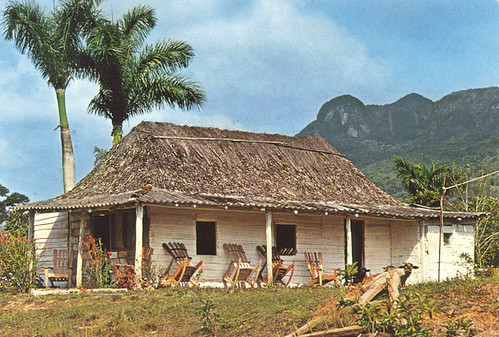Guantanamo in Us
Two important events took place this month in Guantanamo without much fanfare, the same city where some accused me of defamation when I described it as “Cinderella” -- they missed the intent of this appellative.
The first of these events refers to the presence of General Arnaldo Tamayo Mendez in his hometown, for the celebration of the 30th anniversary of the first Cuban, first Latin American and first person with roots in Africa plunging into outer space.
In my article, “Guantanamo’s most important anniversary,” I suggested the need to honor and perpetuate this history making event with the creation of an aerospace museum, which would attract thousands of tourists, instill interest in this science among our youths and, in fact, create an important workplace in Guantanamo, for which I was accused of being naïve.
General Hospital Agostinho Neto commemorated its 32nd anniversary, in moments in which it is undergoing an insufficient palliative capital improvement, which is hoped will revert its severe physical deterioration, deficiencies in its medical services and a marked lack of equipment, material goods and instruments.
Obsolete or missing equipment, scientific stagnation, increased risks of malpractice and public complaints are some of the adverse factors afflicting over 325,000 inhabitants under its care.
These deficiencies have great and far reaching impacts, as they exert pressure on professors, educators, students and patients alike, forcing the introduction of short cuts, including the compression of student curriculum. Missing teaching materials, equipments, reagents and outdated technological and informatics resources and a lack of financial stimulus have stagnated and eroded efforts to achieve higher degree of professional excellence.
That is why a 640,000 pesos and 149,000 CUC budget, with a 5 year timeline to complete this rehabilitation project as reported by the local newspaper Venceremos on 6/27, is an unacceptable joke in poor taste, which affects both people living in and outside of Guantanamo.
Why not take advantage of this predicament to transform the Agosthinho Neto General Hospital into the largest, best equipped, scientific and research Medical Center outside of Havana with the highest academic level?
What better monument can perpetuate the historic flight into outer space and honor the memory of physicians, nurses, military, civilians, wounded, veterans and those fallen in combat in Angola?
What better way is there to honor the memory of a million slaves forcefully introduced into Cuba and thousands of members of the Independent Party of Color, willfully massacred in Guantanamo in 1912?
This monumental project, which is impossible to accomplish with the nation’s present financial woes, could become a reality if Cuba engaged with thousands of citizens from Guantanamo and the rest of nation living across the globe, who are respectful of government policies and love their families and their country.
The present moment calls for unity, comprehension and tolerance on behalf of a better tomorrow for all, rather than finger pointing or counterproductive incendiary remarks.
The devastation caused by Hurricane Georges in Guantanamo in 1998 led the Caribbean American Children Foundation, other solidarity groups, humanists and peace-loving people across Florida, to collect health, educational, handicap, sports and cultural goods which were placed on the first four engine cargo airplane to depart from Miami to Guantanamo since 1959. These solidarity efforts have continued with that region to this day.
The proposed Caribbean Medical Center incorporating the Agostinho Neto General Hospital and its Medical School could have a potential enrollment of 10,000 national and international medical students. This could entice an international, progressive, solidarity-oriented academic and professional staff to develop the highest research and scientific center capable of graduating with the maximum rigors and highest scientific standards, 1,000 physicians, 500 nurses and 500 technologists from around the world every year.
This facility, with its recognized top level scientific standard and perfect geographical location, could receive thousands of paying patients from the Caribbean, Central America and tens of thousands of US residents without health insurance, mental health patients without Spanish-speaking professionals and women subjected to draconian reproductive care restrictions in numerous parts of the US.
This scientific complex, disseminating healthcare and sciences throughout the Third World, could become a permanent homage to our Latin American-African heritage, turning into a reality the dreams of Bolivar-N’Krumah, San Martin-Nyerere, Marti-Mandela, Albizu Campos-Neto and L’Overture-Lumumba, while generating thousands of jobs and millions of dollars for Cuba and the dispossessed of the world.
The Center for Processing Urban Residue or CEPRU in Guantanamo, presented to 3,500 million people through “Heroes” on CNN TV in the year 2007, what men and women of Guantanamo are capable of doing. It is up to the Caribbean Medical Center to ratify, consolidate and expand these natural virtues of the indomitable zone of Cuba.
